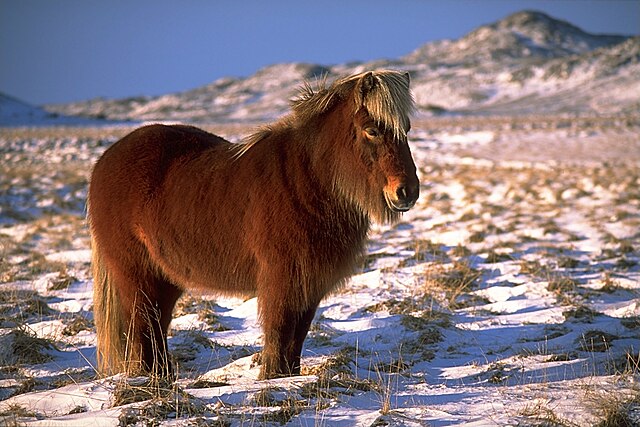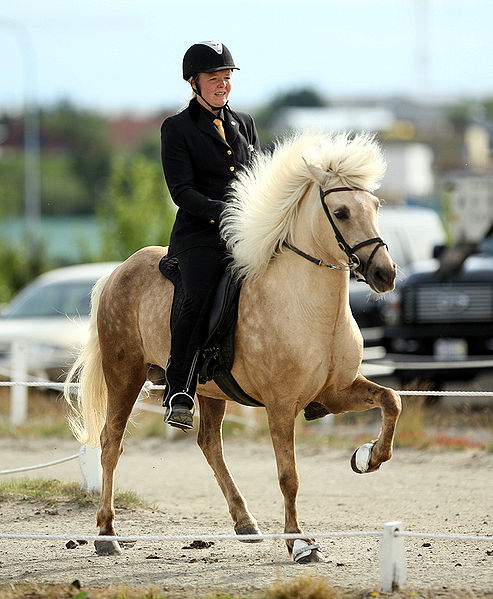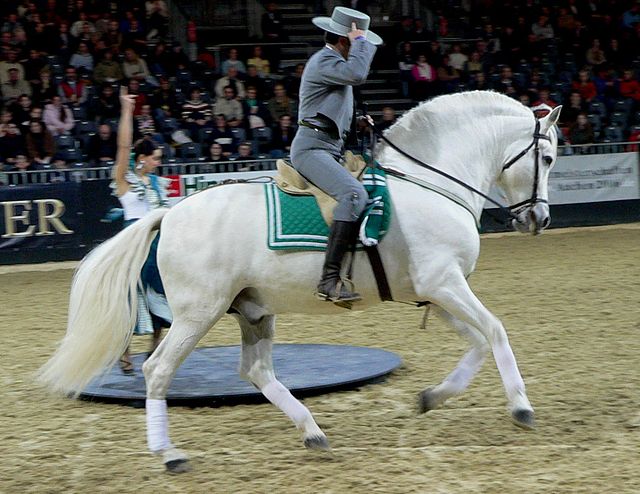The Icelandic horse is a breed of horse developed in Iceland. Although the horses are small, at times pony-sized, most registries for the Icelandic refer to it as a horse. Icelandic horses are long-lived and hardy. In their native country they have few diseases; Icelandic law prevents horses from being imported into the country and exported animals are not allowed to return. In addition to the gaits of walk, trot, and canter/gallop typical of other horse breeds, many Icelandic horses can also do the tölt and the flying pace. The only breed of horse in Iceland, they are also popular internationally, and sizable populations exist in Europe and North America. The breed is still used for traditional sheepherding work in its native country, as well as for leisure, showing, and racing.
Icelandic horse performing the tölt
Icelandic horse in summer coat
An Icelandic horse with a heavy winter coat
A palomino Icelandic being ridden at a tölt
Horses can use various gaits during locomotion across solid ground, either naturally or as a result of specialized training by humans.
An 1878 chronophotography sequence by Eadweard Muybridge of a horse in motion
The trot, a two-beat gait involving diagonal pairs of legs. The two legs with white stockings are off the ground.
The Fairman Rogers Four-in-Hand (1879–80) by Thomas Eakins, was the first painting to demonstrate precisely how horses move based on systematic photographic analysis. Eakins based these on Eadweard Muybridge's 1878 photographs of the trotter "Abe Edgington".
An Andalusian performing the canter. The left hind and right fore will land at the same moment, creating three beats in the stride. This horse is on the left lead, as the left rear and right fore are moving together, with the left hind leading the right hind. As the left fore lands, it will be in front of the right fore.








